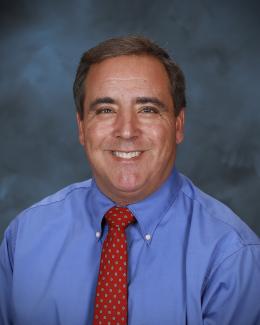There’s no other way to spin it: Brian Damiano loves centrifuges.
“We can sketch a picture of a centrifuge, and it looks very simple — it’s basically just a spinning cylinder,” Damiano said. “But it’s remarkably challenging, and although we’ve been working on centrifuges for decades, it seems there’s always something additional to figure out, to investigate and to improve. That’s what makes working on these machines so interesting.”
Damiano has spent four decades working with centrifuges, most of that time spent in research and development. Now, as section head of ISED’s Centrifuge Engineering and Fabrication Section, he’s more involved with their design and fabrication, along with the mechanical engineering analysis to which he was accustomed during a dozen years as a group leader.
“Analysts come up with concepts, but if you can’t turn those engineering drawings into actual functional parts, it doesn’t do any good,” Damiano said. “I saw this as a chance to do something with the whole scope of the R&D process. This is my 40th year out here, so it’s exciting to get to do something new.”
A New Jersey native who found his way to ORNL through a co-op program at Virginia Polytechnic Institute and State University, Damiano’s first encounter with centrifuge was at the K-25 Site. In 1981, he started as a summer intern working on the Cascade Improvement/Cascade Upgrade Program.
He came back full-time in 1983, after graduating with a bachelor’s degree in mechanical engineering and a master’s degree in nuclear engineering, to work as a development engineer in the Separation System Division, modifying codes and modeling gas centrifuges for computer simulation. When that project ended in 1985, he moved to ORNL’s Engineering Science and Technology Division, becoming leader for the Dynamic Systems Analysis Group in 2008. Now, as a distinguished technical staff member, his contributions to ORNL programs involving isotope separation and nuclear nonproliferation have been widely recognized.
He’s also known for his habit of biking to work during spring, summer and fall — from Powell. Cycling 40 miles round-trip — which usually takes him between an hour and a half and two hours — gives him a chance to immerse himself in nature: the sights, sounds and, especially, the smells.
“Sometimes that’s a good thing; sometimes it’s not such a good thing,” he said, laughing.
As section head, he strives to imitate some of the “spectacularly good leaders” he worked for at ORNL, including Lester Oakes, Charles “Buddy” Holly and Bill Strunk.
“These guys would make everybody feel special, whether you were their student or their second-in-command,” Damiano said. “That motivated you to do the very best you could for them. And they looked out for their people. Bill Strunk provided me more opportunities than anyone, and I owe a lot of my success to him. I do try to provide the people on our team with opportunities to grow.”
And he foresees plenty of opportunities in centrifuge. Having seen several large, working centrifuge programs never come to fruition, Damiano thinks the time for the technology has arrived.
“With the projects we have, the funding we expect to be coming, and the existing staff, we can be the world leaders in centrifuge design and demonstration and deployment,” he said. “To me, that’s very exciting.”
UT-Battelle manages ORNL for the Department of Energy’s Office of Science, the single largest supporter of basic research in the physical sciences in the United States. The Office of Science is working to address some of the most pressing challenges of our time. For more information, please visit energy.gov/science.





